#The British Council
Explore tagged Tumblr posts
Text
buffy the vampire slayer au where giles has a thick new york accent instead of a british one and he just says “ey im watchin here” all the time
#would be really cool imo#buffy#buffy the vampire slayer#btvs#rupert giles#giles buffy#giles btvs#anthony stewart head#british#new york#the watcher’s council#buffy summers
1K notes
·
View notes
Text
How come almost every rechargeable device in the world has a lithium battery which will one day, at the end of its life, swell up into a ticking time-bomb full of fire and toxic gas, and yet whenever this happens and I phone up my local council waste management department/recycling center/fire safety advice hotline like "Hi, i have a bomb, who do i give it to" they're all like

#'Put it in a metal bucket outside with some sand' AND THEN WHAT?#IT STAYS THERE? FOREVER??#The fire dept was like 'IDK take it to the tip or to a mobile phone shop'#and the tip and all the mobile phone shops were like 'I don't want this'#'We take regular LI batteries but this is now a Hazardous Material. Ask the council'#And the council was like 'IDK. Ask the fire department'#British government efficiency at its finest
76 notes
·
View notes
Text

FERANMI
www.beau-gar.tumblr.com
#feranmi ayeni#bianca saunders#british gq#black man#black model#handsome#menswear#fashion#blackmalemodel#gq prize#british fashion council#menswearfashion#male model#la sape#sapeurs#dandy#sprezzatura#mensfashion#black models#african models#model#fashion model#men's fashion#parisian style#mens style#style inspiration#fashion style#street style#style#gq style
36 notes
·
View notes
Text
Do you know what I would absolutely love? I'd love to see Raphael - any iteration of him - go toe-to-toe with a British girly that has grown up in the rougher parts of England
I know that the stereotype is that New Yorker's are rather brash but I feel like certain characters in the UK can be quite... colourful with their language. Not to mention, creative
Language warning
And given Raph's affinity for quickly growing hot-tempered, I think this would be interesting and hilarious. I don't know about anyone else in this country but easily angered people make such good prey when it comes to these things
The lingo would both infuriate and confuse him
"A'ight, you fuckin' bell end, you think you're some 'ard shit, do ya?"
Like, the missed t's and h's are enough to throw him through a loop but what the hell is a "bell end"??? Some of these words are so alien to him, it pisses him off: prick, twat, pillock. He has no idea what they mean but he doesn't like how they're being directed at him
No matter how many quips he tries to throw back, she just looks unbothered and sends more right back
Matters aren't helped by the fact that his brothers state how "this must be the British version of Brooklyn" because we all know how different Raph's accent is from theirs
It was just a funny idea that came to me now and I cannot stop thinking about it. I... I may have to write something with this in mind
Just add it to my never-ending list of ideas... bloody hell
#tmnt#teenage mutant ninja turtles#raphael#tmnt x reader#raphael x reader#tmnt 2003#tmnt 2012#tmnt bayverse#tmnt 2007#british reader#grew up on that council estate#this is just me self inserting#as usual lol
64 notes
·
View notes
Text


Simone Ashley via her instagram
125 notes
·
View notes
Text

casey tcoti because i have not made art for like several weeks. forcing myself to draw. cate see from #1 New York Times Bestseller fanfiction Coujncil Of The .
also did you know i dont listen to music i just stare at my canvas in silence for like an hour and then i am done and have created art.
i am going to go play with rocks and bugs now. Tomorrow i will start working on commissions. dont mess with me im a big boy now and im v
#casey tcoti#lorelart#the council of the inevitable#tcoti#i should be considered a horror artist for drawing pasty british teenagers
22 notes
·
View notes
Text
ROUND 3: Paul Weller VS Lush


PAUL WELLER
LUSH
YOU CANT MAKE ME-
#lush band#paul weller#the jam#the style council#miki berenyi#britpop#spotify#90s music#british music#90s rock#britpop 90s#90s#tournament poll#90s britpop#90s indie#Spotify
12 notes
·
View notes
Text

25 March 2024

The Princess Royal has paid her respects to those who lost their lives in the Lockerbie bombing, which happened 35 years ago.
On 21 December 1988, a bomb exploded on Pan Am Flight 103 from Frankfurt to Detroit as it flew above the Dumfries and Galloway town, killing all 259 passengers and crew onboard.
A further 11 people died on the ground as parts of the wreckage landed on homes in the town.
Princess Anne visited Dryfesdale cemetery and the visitor centre on the town’s outskirts to remember those who lost their lives to the bombing.

She met officials from Dumfries and Galloway Council, as well as others involved in keeping the memory of those who lost their lives alive.
She was joined by Fiona Armstrong, Lord Lieutenant of Dumfries.
Ms Armstrong, also a newsreader and reporter, covered the bombing while working as a journalist.
The princess was shown around the visitor centre and spoke those in attendance.
She signed the visitor guestbook and unveiled a small plaque created in honour of her visit to the site.
Shortly afterwards, she walked through the graveyard to the official memorial for those who were killed as a result of the bombing, where she laid a special wreath signed by her in commemoration of the dead.
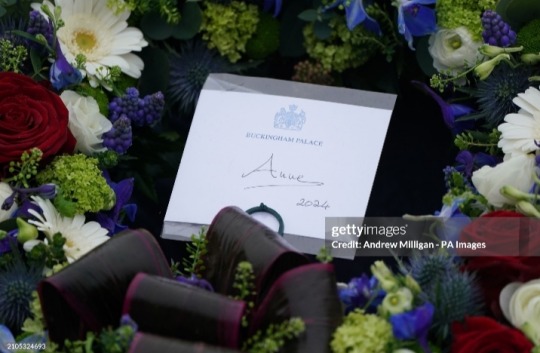


Ahead of laying the wreath, Ms Armstrong said:
“I was there on that night and I saw first-hand how this town rallied, how it copes and has continued to cope over the decades.
You could never be more proud of a community. A disaster like this can never be forgotten.
So much grief, such senseless losses, 270 innocent lives, remembered here on this memorial, each and every name will never be forgotten.
Lockerbie’s moto is forward, and we move together in hope.
Your Royal Highness, your brother, now the King, came here following the disaster.
Your mother, the late Queen; your father, the Duke of Edinburgh; also came here some years after to pay their respects.
And how we are honoured to have you here today, as the Princess Royal, but we also ask you to lay a wreath, please, of remembrance.”

Former Libyan intelligence officer, Abdelbaset al-Megrahi, remains the only person to have been convicted following the atrocity.
He was found guilty of 270 counts of murder by a panel of three Scottish judges, sitting at a special court in the Hague in 2001 and was imprisoned in Scotland.
He was granted compassionate release in 2009 after being diagnosed with terminal cancer and returned to Libya where he died in 2012.
Libyan Abu Agila Masud is alleged to have helped make the bomb.
He is to go on trial in the US in May 2025 facing three charges which he denies.

#Princess Anne#Princess Royal#British Royal Family#Lockerbie Air Disaster Memorial#Pan Am Flight 103#Dumfries and Galloway Council
43 notes
·
View notes
Text
when your council tax shoots up next year, you need to ask why labour isn't restoring the central government funding for councils that was slashed in half during Cameron's time as PM. if asked, labour will cry about the fiscal rules and the budget black hole. but that hasn't stopped them setting a target to increase defence spending to 2.5 percent of GDP. your hardship is their political choice, just as it was for the tories. they're all representatives of business and imperialism, and enemies of working people
9 notes
·
View notes
Text
‘Like Going To The Moon’: The World’s Most Terrifying Ocean Crossing
— Julia Buckley, CNN | Monday February 5, 2024

The Drake Passage is feared by travelers and sailors alike. Gerald Corsi/iStockphoto/Getty Images
It’s the body of water that instils fear and inspires sailors in equal measure. Six hundred miles of open sea, and some of the roughest conditions on the planet – with an equally inhospitable land of snow and ice awaiting you at the end of it.
“The most dreaded bit of ocean on the globe – and rightly so,” Alfred Lansing wrote of explorer Ernest Shackleton’s 1916 voyage across it in a small lifeboat. It is, of course, the Drake Passage, connecting the southern tip of the South American continent with the northernmost point of the Antarctic Peninsula.
Once the preserve of explorers and sea dogs, the Drake is today a daunting challenge for an ever-increasing number of travelers to Antarctica – and not just because it takes up to 48 hours to cross it. For many, being able to boast of surviving the “Drake shake” is part of the attraction of going to the “white continent.”
But what causes those “Shakes,” which can see waves topping nearly 50 feet battering the ships? And how do sailors navigate the planet’s wildest waters?
For oceanographers, it turns out, the Drake is a fascinating place because of what’s going on under the surface of those thrashing waters. And for ship captains, it’s a challenge that needs to be approached with a healthy dose of fear.
The World’s Strongest Storms
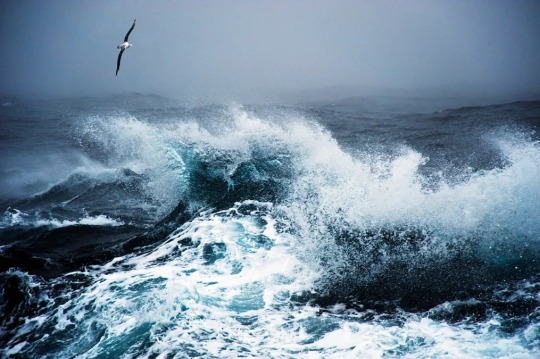
The Drake Passage can see waves of up to 49 feet. Mike Hill/Stone RF/Getty Images
At around 600 miles wide and up to 6,000 meters (nearly four miles) deep, the Drake is objectively a vast body of water. To us, that is. To the planet as a whole, less so.
The Antarctic Peninsula, where tourists visit, isn’t even Antarctica proper. It’s a thinning peninsula, rotating northwards from the vast continent of Antarctica, and reaching towards the southern tip of South America – the two pointing towards each other, a bit like a tectonic version of Michelangelo’s “Creation of Adam” in the Sistine Chapel.
That creates a pinch point effect, with the water being squeezed between the two land masses – the ocean is surging through the gap between the continents.
“It’s the only place in the world where those winds can push all around the globe without hitting land – and land tends to dampen storms,” says oceanographer Alexander Brearley, head of open oceans at the British Antarctic Survey.
Winds tend to blow west to east, he says – and the latitudes of 40 to 60 are notorious for strong winds. Hence their nicknames of the “roaring forties,” “furious fifties” and “screaming sixties” (Antarctica officially starts at 60 degrees).
But winds are slowed by landmass – which is why Atlantic storms tend to smash into Ireland and the UK (as they did, causing havoc, with Storm Isha in January buffeting planes to entirely different countries) and then weaken as they continue east to the European continent.
With no land to slow them down at the Drake’s latitude anywhere on the planet, winds can hurtle around the globe, gathering pace – and smashing into ships.
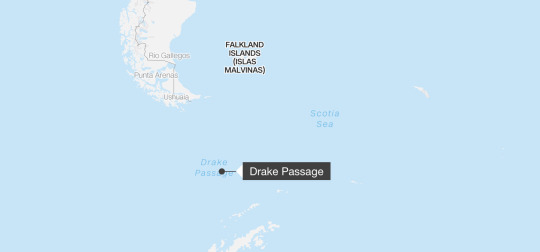
“In the middle of the Drake Passage the winds may have blown over thousands of kilometers to where you are,” says Brearley. “Kinetic energy is converted from wind into waves, and builds up storm waves.” Those can reach up to 15 meters, or 49 feet, he says. Although before you get too alarmed, know that the mean wave height on the Drake is rather less – four to five meters, or 13-16 feet. That’s still double what you’ll find in the Atlantic, by way of comparison.
And it’s not just the winds making the waters rough – the Drake is basically one big surge of water.
“The Southern Ocean is very stormy in general [but] in the Drake you’re really squeezing [the water] between the Antarctic and the southern hemisphere,” he adds. “That intensifies the storms as they come through.” He calls it a “funneling effect.”
Then there’s the speed at which the water is thrashing through. The Drake is part of the most voluminous ocean current in the world, with up to 5,300 million cubic feet flowing per second. Squeezed into the narrow passage, the current increases, traveling west to east. Brearley says that at surface level, that current is less perceptible – just a couple of knots – so you won’t really sense it onboard. “But it does mean you’ll travel a bit more slowly,” he says.
For oceanographers, he says, the Drake is “a fascinating place.”
It’s home to what he calls “underwater mountains” below the surface – and the enormous current squeezing through the (relatively) narrow passage causes waves to break against them underwater. These “internal waves,” as he calls them, create vortices which bring colder water from the depths of the ocean higher up – important for the planet’s climate.
“It’s not just turbulent at the surface, though obviously that’s what you feel the most – but it’s actually turbulent all the way through the water column,” says Brearley, who regularly crosses the Drake on a research ship. Does he get scared? “I don’t think I’ve ever been really fearful, but it can be very unpleasant in terms of how rough it is,” he says candidly.
Fear Breeds Fear

In 2010, tourist ship Clelia II declared an emergency after suffering engine failure in the Drake. Fiona Stewart, Garett McIntosh/AP
One other key thing that makes the Drake so scary: our fear of the Drake itself.
Brearley points out that until the Panama Canal opened in 1914, ships going from Europe to the west coast of the Americas had to dip round Cape Horn – the southern tip of South America – and then trundle up the Pacific coast.
“Let’s say you were shipping goods from western Europe to California. You either had to offload them in New York and do the journey across the US, or you had to go all the way around,” he says. It wasn’t just large cargo ships, either; passenger ships made the same route.
There’s even a monument at the tip of Cape Horn, in memorial of the more than 10,000 sailors who are believed to have died traveling through.
“The routes between the south of South Africa and Australia, or Australia or New Zealand to Antarctica, don’t really lie on any major shipping routes,” says Brearley. “The reason it’s been so feared over the centuries is because the Drake is where ships really have to go. Other parts [of the Southern Ocean] can be avoided.”
‘We Don’t Gamble’
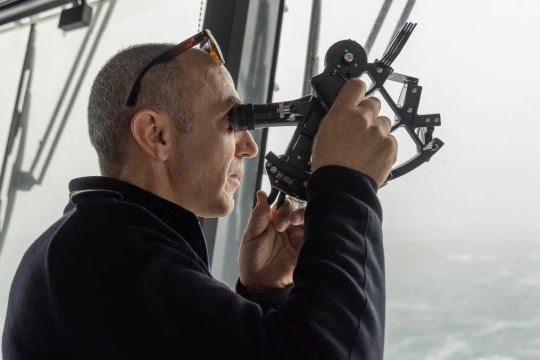
Captain Stanislas Devorsine regularly crosses the Drake. Sue Flood/Ponant Photo Ambassador
Navigating the Drake is an extremely complex task that demands humility and a side of fear, says Captain Stanislas Devorsine, one of three captains of Le Commandant Charcot, a polar vessel of adventure cruise company Ponant.
“You have to have a healthy fear,” he says of the Drake. “It’s something that keeps you focused, alert, sensitive to the ship and the weather. You need to be aware that it can be dangerous – that it’s never routine.”
Devorsine made his Drake debut as a captain over 20 years ago, sailing an icebreaker full of scientists over to Antarctica for a research stint.
“We had very, very rough seas – more than 20 meter [66 feet] swells,” he says. “It was very windy, very rough.” Not that Ponant’s clients face anything like that. Devorsine is quick to point out that the comfort levels for a research ship – and the conditions it will sail in – are very different from those for a cruise.
“We are extremely cautious – the ocean is stronger than us,” he says. “We’re not able to go in terrible weather. We go in rough seas but always with a big safety margin. We’re not gambling.”
Even with that extra safety margin, though, he admits that crossing the Drake can be a hairy experience. “It can be very rough and very dangerous, so we take special care,” he says.
“We have to choose the best time to cross the Drake. We have to adapt our course – sometimes we don’t head in our final direction, we alter the course to have a better angle with the waves. We might slow down to leave a low pressure path ahead, or speed up to pass one before it arrives.”
The ‘Drake Shake’ and Broken Plates
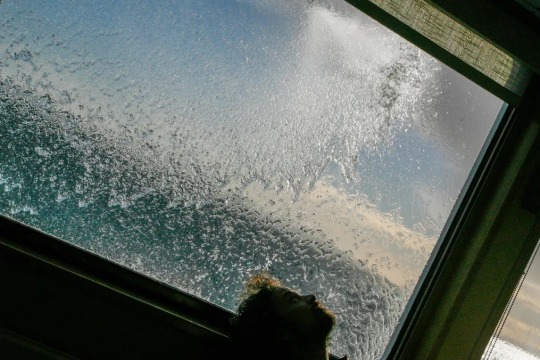
Captains check the weather up to six times a day before departure to ensure a safe crossing. Jamie Lafferty
Of course, every time you get on a ship – whether it’s a simple ferry ride or a fancy cruise – the crew will already have meticulously planned the journey, checking everything from the weather to the tides and currents. But planning for a crossing of the Drake is on a whole new level.
Weather forecasting has improved in the two decades since Devorsine’s first ride, he says – and these days crew start planning the voyage while passengers are making their way to South America from all over the globe.
Sometimes they leave late; sometimes they head back early, to beat bad weather. Devorsine – who makes the return journey about six to eight times per year – estimates that the unusually calm “Drake lake” effect happens once in every 10 crossings, with particularly rough conditions (that “Drake shake”) once or twice in every 10 journeys.
Of course, he knows what’s in store long before the passengers reach the ship.
“We look ahead to have the best option to cross. Normally I look at the weather 10 days or a week before, just to have an idea of what it could be,” he says.
“Then I check the forecast once per day, then two or three days before departure I start looking at it twice per day. If it’s going to be a challenging passage you look every six hours. If you have to adjust your departure time, then you look at it very closely to be very accurate.”
His safety margin means that he’s calculating a route that will get you across not just alive, but also as comfortably as possible. Hearing an anecdote about broken crockery and furniture on another operator, he sighs, “That’s a bit too far for me.”
“Before you have any issue with a storm, you have to keep a comfortable ship,” he says. The safety margin is to be sure that the guests will enjoy being in Antarctica, and that we won’t turn around because we have a problem… like injured people.”
In extreme conditions, he orders extra weather advice from Ponant HQ, but if you’re imagining the staff on the bridge desperately radioing for advice as waves batter the ship, think again.
“It would never happen to be in the middle of the Drake with bad conditions, needing assistance from headquarters because it would mean we didn’t have any safety margin before departure. When we cross and it’s going to be challenging, we have a big safety margin and the ship is not at all in danger.”
They are in contact with headquarters with high level satellite antennae throughout the crossing, with both satellite and radio backup if needed – Devorsine says he can’t imagine ever losing contact, whatever the weather.
Antarctica cruise: The last frontier for a big at-last luxury adventure
A Dangerous Thrill

Aurora Expeditions' Greg Mortimer ship has a patented bow to make a Drake crossing more stable. Tyson Mayr/Aurora Expeditions
Devorsine, who now spends 90% of his time sailing in polar waters, feels at home on the Drake. “When I was a little child, I read books about the maritime adventures of sailors and polar heroes,” he says. “I was attracted by tough things – I like challenges. This is why I followed the path to be able to sail in these areas.”
His first experience of the area was doing a “race around the world” in a sailboat as a youngster, heading south from his native France and rounding Cape Horn.
“It was my dream because it’s difficult, dangerous and challenging,” he says.
He’s not the only one. Some guests are drawn to Antarctica trips because of the tough journey. “I guess [they] are attracted by these areas [of the Southern Ocean] because it’s wild, it can be rough, and it’s a unique experience to go there,” he says.
Not everone’s a thrill-seeker though. As managing director of Mundy Adventures, an adventure travel agency, Edwina Lonsdale is dealing with a clientele already used to discomfort – yet she says crossing the Drake is a “conversation topic” during booking.
“it’s something we would raise to make sure people are completely aware of what they’re buying,” she says. “[Going to Antarctica] is a huge investment – you need to talk through every aspect and make sure nothing’s an absolute no.”
Lonsdale advises that passengers nervous of feeling sick should choose their ship carefully. In the past, vessels heading to Antarctica tended to be uncomfortable metal boxes built to take a heavy beating. But in recent years, companies have introduced more technically advanced vessels: like Le Commandant Charcot, which was the world’s first passenger vessel with a Polar Class 2 hull – meaning it can go deeper and further into the ice in polar regions – when it debuted in 2021.
Two of Aurora Expeditions’ ships, the Greg Mortimer and Sylvia Earle, use a patented inverted bow, designed to slide gently through the waves, reducing impact and vibration and improving stability, rather than “punching” through the water as a regular bow shape does, which makes the bow rock up and down.
Lonsdale says that the fancier the vessel and the offerings onboard, the more distractions you’ll have if bad weather hits. Newer boats often have more spacious rooms and bigger windows so that you can watch the horizon, which helps to lessen seasickness. If the budget allows, she says, book a suite – you won’t just get more space, you’ll (likely) have floor-to-ceiling windows, too.
But a word of advice – she recommends a careful selection not just of the right operator for you, but of the ship itself.
“Just because a company has a fleet with a very modern ship doesn’t mean the whole fleet will be like that,” she says.
‘Act Before You Start Spewing’

At Cape Horn there's a monument marking the 10,000 sailors thought to have died navigating the Drake. DreamPictures/Photodisc/Getty Images
So you’ve conquered your fears, booked your ticket and you’re about to set sail. Bad news: the captain is predicting the Drake shake. What to do?
Hopefully you’ve come prepared. Most ships have ginger candies on offer during bad weather, but bring your own, as well as any anti-seasickness medication you want to take. Some passengers swear by acupressure “seeds”: tiny spikes, attached to your ears with a sticking plaster, designed to stimulate acupuncture points. Some ships offer acupuncture onboard; alternatively you can get it done beforehand, since the seeds last for some time.
Devorsine’s top tips are to keep your eyes on the horizon, hold onto the handrail when walking around, be careful around doors, and “don’t jump out of bed.”
Jamie Lafferty, a photographer who leads excursions on Antarctic cruises, says that of his 30-odd crossings, “I’ve had one where it felt like I was going to fall out of bed and that was the second time, way back in 2010 when there was a lot more guesswork involved. Crossing the Drake Passage is much, much more benign than it used to be thanks to the accuracy of modern forecasting models and stabilizers on more modern cruise ships. This doesn’t mean it’ll be smooth, but it’s vastly less chaotic and unpredictable than it used to be.”
His top tip? “Take seasickness medication before heading out into open sea – once you start spewing, tablets aren’t going to be any use.”
Warren Cairns, senior researcher at the Institute of Polar Sciences of the National Research Council of Italy, has a bit of extra help.
“The only thing that works for me is going to the ship’s medic for a scopolamine patch,” he says. “It’s so rough, normal seasickness pills are just to get me to the infirmary.” Although he has it worse than the average tourist – on trips to Antarctica, their research ships have to pause for hours to take samples. “The waves come from all sorts of directions as the thrusters keep it in place,” he says. “When you’re underway it’s a much more regular motion.”
Lonsdale says it’s important not to fight it if you feel ill: “Just go to bed.” But equally, she says, don’t expect it: “It may be calm. You may not feel ill.”
People suffer differently from seasickness she says. “The Pacific has very long, slow swells, Channel crossings [between the UK and France] have quite a bouncy experience. Lots of people say crossing the Drake in very rough weather is uneven enough to not make them ill at all.” On that plate-smashing crossing, for example, this reporter – who was watching 40-foot waves from the observation deck – never got sick.
Remember that however it feels, you’re safe. “There’s an extraordinary level of safety in the build of those ships doing this,” says Lonsdale. Add in the safety margins that the likes of Devorsine build in, and you’re in uncomfortable, but not dangerous, territory.
And if all else fails, remember why you’re there.
“The motivation and excitement to discover those latitudes is very important to fight the seasickness,” says Devorsine. Lonsdale agrees.
“If you were going to the moon, you’d expect the journey to be uncomfortable but it’d be worth it,” she says. “You just have to think, ‘This is what I need to get from one world to another.’”
#World 🌎#Ocean 🌊 World 🌎#Terrifying Ocean 🌊#World’s Strongest Storms ☔️ ☔️ ☔️#Drake Passage#Ernest Shackleton#Antarctica 🇦🇶#The Antarctic 🇦🇶 Peninsula#Oceanographer Alexander Brearley | British 🇬🇧 Antarctic Survey.#Fear#Drake Shake | Broken Plates#Dangerous Thrill#Cape Horn#Actions | Alertness‼️ 🚨 🔔#Warren Cairns#Institute of Polar Sciences of the National Research Council | Italy 🇮🇹#Julia Buckley | CNN
20 notes
·
View notes
Text

My precious blorbo Elden
Typical good boy paladin who is this close to being done with his party's lawless bullshit
#my art#d&d oc art#dungeons and dragons#dnd character#he lives in my head rent free with my other OCs#frankly they would all hate each other#Freiya moved in her sassy vampire boyfriend and he keeps making a mess#Reid (they're not sure if he's even actually a student any more as he's like 36 and never goes to uni) is throwing constant parties#Reva actually dropped out of uni and is running an illegal side hustle and not paying council tax#Elden is sending passive aggressive messages to the group chat about a cleaning rota#whoops ive accidentally created a british uni student HMO au#they're still not paying me any bloody rent
23 notes
·
View notes
Text
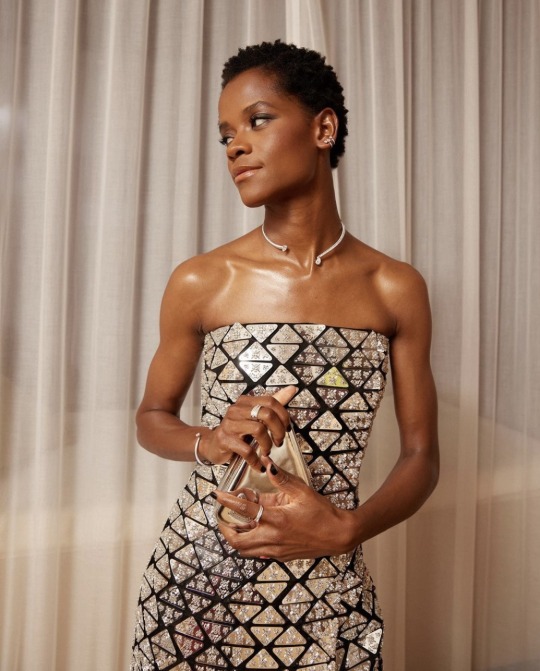
💠💠Stunning💠💠
Letitia Wright in Prada for the 2023 British Fashion Awards
Styling: Shiona Turini
Hair: Stefan Bertin
Makeup: Kenneth Soh
Nails: Simone (Simmy) Cummings
Photography: Danika Magdelena- Sirius Film
25 notes
·
View notes
Text


7 year difference
Keep at it, and your skills will improve
#Yeah#Art is not arting so why not post some of my oc#This guy’s name is Hunter Wing#Previously he used to be an American soccer player#lived in a wealthy part of CA#Oh yeah he also had OP MAGIC TO LITERALLY CREATE LIFE ITSELF#Mate he wasn’t even a main character he was a side love interest#Anyways Hunter now is British (yes represent bby boy) and is the son of one of the people on like the council that rules the land?#Oh he’s also a snobby jerk at first#So we can get that character development and simp-ness yessss#saph doodles#oc#ocs#my ocs#original character#oc art#artists on tumblr#drawing
11 notes
·
View notes
Photo


Onwald mæg wel reccean se þe ægðer ge hiene habban con ge wiðwinnan.*
- Old English
He wields power well who can both hold and resist it.*
Penny Mordaunt, Leader of the House of Commons and Lord President of the Privy Council, took on a leading role during the coronation service at Westminster Abbey of King Charles III. Many commentators agreed she stood out for doing such a sterling job in standing to attention and holding up a sword weighing around 3kg for a good part of the proceedings. She didn’t waver once.
It’s all the more surprising that the upward political trajectory of the MP from Plymouth had flatlined after she had a promising junior ministerial career before losing out twice in the Tory leadership elections to Liz Truss and later Rishi Sunak.
It was the ill-fated Truss in her brief stint as Prime Minister who had given the 50 year old Mordaunt the wooden spoon of political offices, Leader of the House of Commons, often seen as half-way house for a minister on his way down the greasy pole of ministerial politics. Sunak kept her in the same position after annoying Sunak loyalists for staying in the leadership race to the bitter end. In that position she has thrived somewhat for her debating skills and being good on her feet as well being loyal to the Prime Minister.
Little did anyone think - least of Mordaunt - that as Leader of the Commons she would also breathe life into the nondescript title of Lord President of the Privy Council. But in one of the more arcane details of that title is the right to hold the Sword of State in any royal coronation.
As Lord President of the Privy Council she was expected the wear the august robes of that office but chose instead for a more modest presentation of a blue dress with mute gold olive leaf trimmings. As Lord President of the Privy Council, Mordaunt exchanged the larger Sword of State, a steel blade with a silver-gilt hilt that symbolises royal authority, for the jewelled Sword of Offering, which the Archbishop of Canterbury Justin Welby then placed in the King's right hand. Mordaunt later redeemed the sword by offering 100 newly minted 50 pence coins and carried the sword before the King for the rest of the service.
Symbolising the protection of good and the punishment of evil, the jewelled sword was used as a Sword of Offering at the coronation ceremony of George IV in 1821. It wouldn't appear again at a coronation ceremony until 1902 for Edward VII and it has been featured at all subsequent coronations since. The sword features partly blued and gilt steel decorated on both faces with national emblems, including roses, thistles and shamrocks, while the hilt and scabbard are decorated with numerous jewels such as diamonds, rubies, sapphires and emeralds.
There is no question that Penny Mordaunt cemented herself in the public consciousness, with even Labour counterparts commenting that she looked 'damn fine' and 'stole the show'. Admiration for her sword-bearing skills at the coronation might just reignite her political fortunes especially if Sunak and his government are widely expected to lose the upcoming general election. She may be third time lucky at getting the chance to be the leader of the Tory party. In any case many would agree in watching her steadfast performance at the coronation, it really might be the case that the ‘Penny is mightier than the sword’.
#Old English#oe#quote#penny mordaunt#mordaunt#coronation#king charles III#leader of the commons#privy council#sword#sword of state#sword of offering#monarchy#britain#british monarchy#ceremony#ritual#politics
55 notes
·
View notes
Text
Two groups in the Canadian Sikh diaspora are calling for Canada's political parties to "present a united front" on India after Prime Minister Justin Trudeau announced a "potential link" between the shooting death of a local leader and the Indian government.
In a joint statement, the Ontario Gurdwaras Committee and the British Columbia Gurdwaras Council say that "Canadian parties of all stripes must be unequivocally clear" about their opposition to possible foreign interference relating to the death of Hardeep Singh Nijjar in June.
Full article
Tagging: @politicsofcanada
#cdnpoli#canada#canadian politics#canadian news#canadian#India#hardeep singh nijjar#Sikh#religious persecution#religious discrimination#murder#ontario gurdwaras committee#british columbia gurdwaras council#religious persecution tw#religious discrimination tw#murder tw
30 notes
·
View notes
Text


Simone Ashley attends The Fashion Awards 2023 x
71 notes
·
View notes